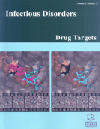
Full text loading...
This review explores various biliary tract diseases caused by different organisms, including cholelithiasis, hepatolithiasis, and choledocholithiasis. The biliary tract's primary functions include collecting, storing, concentrating, and delivering bile juice produced by the liver. Neurohormonal systems involving the vagus and splanchnic nerves, alongside cholecystokinin, regulate gallbladder movement during fasting and digestion. Under normal conditions, bile acids play a crucial role, with approximately 95% being reabsorbed by the intestinal epithelium and returned to the liver via the portal vein system. The liver, often hailed as a miracle worker, detoxifies, purifies, and regenerates, performi ng essential functions in the body. Recent research indicates that the gallbladder, akin to the intestine, harbors a diverse microbiota. Additionally, the biliary mucosa features chemical, mechanical, and immunological barriers that promote immunological tolerance. Hepatotoxicity remains a significant global health concern and a leading cause of mortality. Providing clear and accurate information on liver toxicity is critical, especially in the context of medication safety and public health. By refining these elements, this review can effectively convey the complexity and importance of biliary tract diseases and liver function in health and disease contexts.

Article metrics loading...

Full text loading...
References


Data & Media loading...

